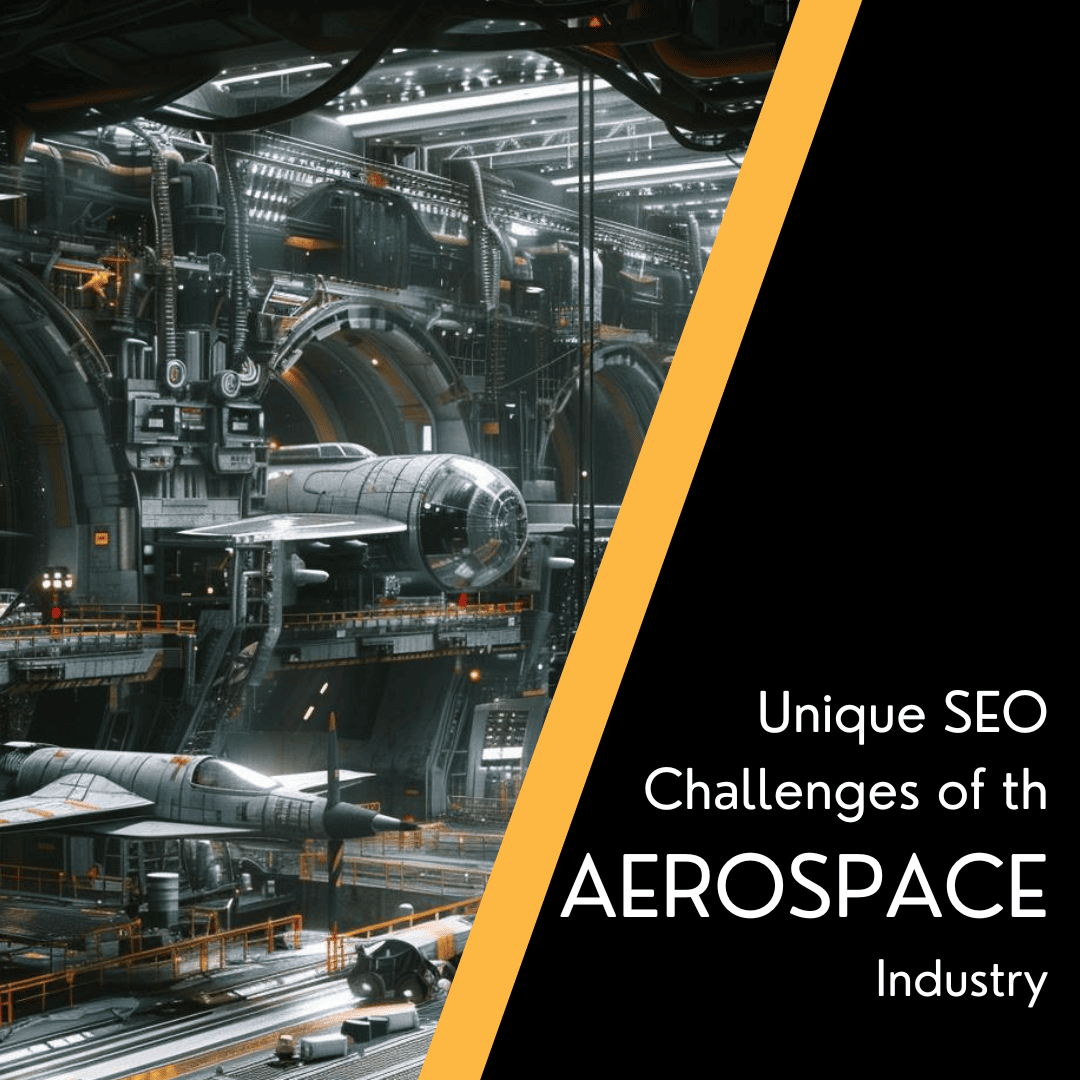The aerospace industry, known for its high levels of technicality, precision, and innovation, faces unique challenges when it comes to search engine optimization (SEO). While the fundamental principles of SEO apply across industries, the aerospace sector must navigate a series of specific hurdles to achieve digital visibility and engagement. This article delves into these unique challenges and proposes strategies to overcome them effectively.

1. Highly Technical and Niche Audience:
The aerospace sector caters to a highly specialized and technical audience, including engineers, technicians, government bodies, and defense contractors. The niche nature of this audience means that generic SEO strategies and broad keywords are often ineffective. Instead, aerospace SEO requires a deep understanding of the industry’s terminology, trends, and user intent.
Solution: Develop a keyword strategy that incorporates technical jargon, industry-specific terms, and acronyms. Conduct thorough research to understand the search behavior of your target audience and tailor your content to meet their specific needs and questions.
2. Regulatory Compliance and Confidentiality:
Aerospace companies frequently deal with sensitive information and strict regulatory standards. This can limit the amount of technical data and proprietary information that can be shared publicly, thereby restricting content marketing and SEO efforts.
Solution: Focus on creating content that showcases industry expertise without revealing confidential or regulated information. Utilize case studies, whitepapers, and industry analyses that comply with legal restrictions while still providing value to your audience.
3. International SEO Challenges:
The aerospace industry is inherently global, dealing with international clients, suppliers, and regulatory environments. This presents challenges for SEO, as companies must optimize their online presence for multiple languages, regions, and search engines.
Solution: Implement an international SEO strategy by creating geo-specific content and using hreflang tags to signal the intended audience of each piece. Research local search behaviors and preferences in different markets and tailor your SEO efforts accordingly.
4. Technical Content Accessibility:
The technical complexity of aerospace content can make it inaccessible to wider audiences, including potential clients who may not have a deep technical background. This can reduce engagement and limit the effectiveness of SEO.
Solution: While maintaining technical accuracy, simplify complex concepts and use engaging formats like videos, infographics, and blogs. This makes content more accessible and shareable, improving SEO performance. Additionally, include comprehensive FAQs and glossaries to help demystify industry jargon.
5. Long Sales Cycles and Lead Generation:
Aerospace products and services often involve long sales cycles and significant investments. Traditional SEO metrics like immediate conversions may not fully capture the effectiveness of SEO strategies in this context.
Solution: Focus on metrics that reflect the aerospace industry’s lengthy decision-making processes, such as lead quality, engagement time, and content download rates. Develop content that supports the entire sales cycle, from awareness to decision-making, and use SEO to drive targeted traffic at each stage.
6. Evolving Technologies and Trends:
The aerospace industry is at the forefront of technological innovation, leading to rapidly changing trends and focus areas. SEO strategies must adapt quickly to remain relevant and visible in search results.
Solution: Stay abreast of industry trends and technological advancements. Regularly update your content and keywords to reflect current interests and innovations in the aerospace sector. Participate in industry forums and events to keep your SEO strategy aligned with the latest developments.
7. Competitive Landscape:
The aerospace sector is highly competitive, with established companies and startups vying for visibility. Standing out in search engine results can be particularly challenging in such an environment.
Solution: Conduct comprehensive competitor analysis to understand their SEO strategies and identify gaps in their online presence. Focus on niche topics and unique value propositions where your company can genuinely excel. Use backlink strategies, such as guest blogging and partnerships, to build your site’s authority.
Conclusion:
SEO in the aerospace industry presents unique challenges, from technical jargon and regulatory constraints to global market considerations and the specialized nature of the target audience. By understanding these specific hurdles and implementing tailored strategies, aerospace companies can enhance their digital visibility, engage more effectively with their niche audience, and navigate the competitive landscape successfully. As the aerospace sector continues to evolve, staying ahead in SEO requires constant learning, flexibility, and a commitment to quality, relevant content.





